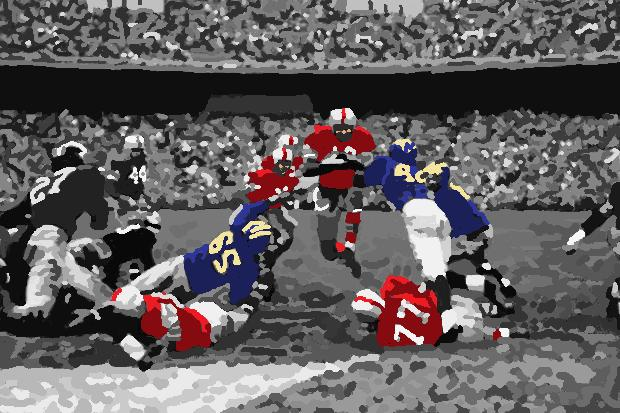


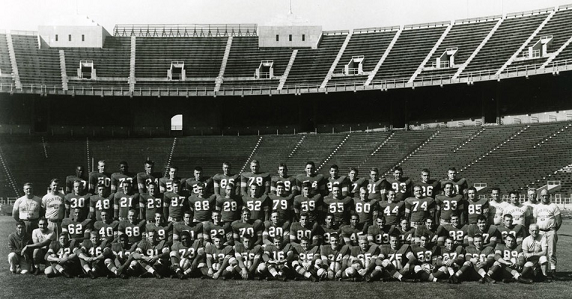
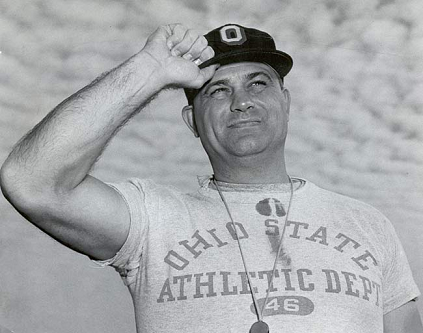
| Indiana (3-6) | 28-0 | |
| California (5-5) | 21-13 | |
| at Illinois (1-8) | 40-7 | #14 |
| Iowa (5-4) | 20-14 | |
| Wisconsin (7-2) | 31-14 | #7 |
| at Northwestern (2-7) | 14-7 | |
| Pittsburgh (4-5) | 26-0 | |
| at Purdue (5-3-1) | 28-6 | #15 |
| Michigan (6-3) | 21-7 | #12 |
| Rose Bowl Southern Cal (8-4) | 20-7 | #25 |
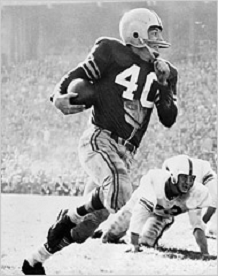
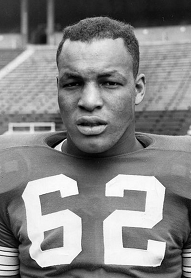
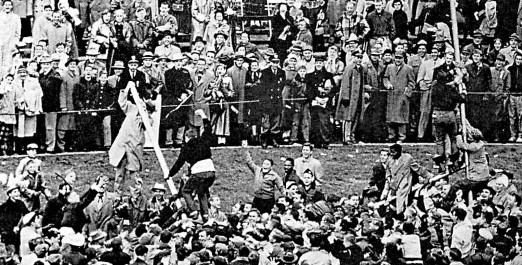
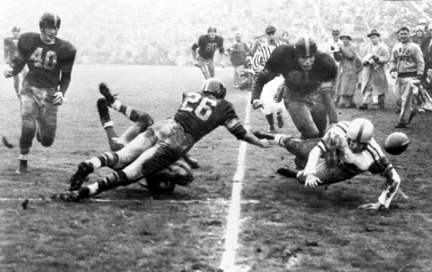
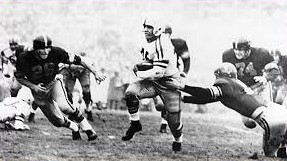
| San Diego Navy | 67-0 | |
| at Kansas (0-10) | 32-7 | |
| Maryland (7-2-1) | 12-7 | #10 |
| at Washington (2-8) | 21-20 | |
| Stanford (4-6) | 72-0 | |
| at Oregon State (1-8) | 61-0 | |
| at California (5-5) | 27-6 | |
| Oregon (6-4) | 41-0 | |
| Southern Cal (8-4) | 34-0 | #25 |
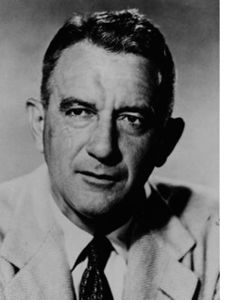 UCLA
owns the most NCAA national championships of any university in the
country, but 1954 is UCLA's one and only mythical national championship
in football. The head coach was Hall of Famer Henry "Red" Sanders (pictured), a
Vanderbilt graduate who had coached there 1940-1942 and 1946-1948,
going 36-22-2. He then went 69-19-1 at UCLA 1949-1957 and won 3
straight PCC titles 1953-1955. Just before the 1958 season, he died of
a heart attack in a Los Angeles hotel room with a prostitute.
UCLA
owns the most NCAA national championships of any university in the
country, but 1954 is UCLA's one and only mythical national championship
in football. The head coach was Hall of Famer Henry "Red" Sanders (pictured), a
Vanderbilt graduate who had coached there 1940-1942 and 1946-1948,
going 36-22-2. He then went 69-19-1 at UCLA 1949-1957 and won 3
straight PCC titles 1953-1955. Just before the 1958 season, he died of
a heart attack in a Los Angeles hotel room with a prostitute.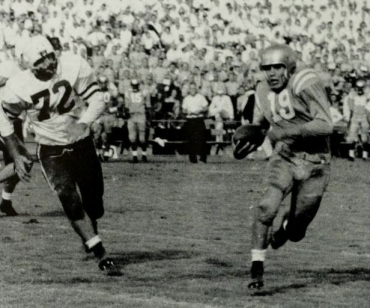
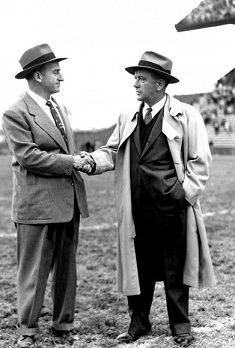
| at California (5-5) | 27-13 | |
| Texas Christian (4-6) | 21-16 | #24 |
| (Dallas) Texas (4-5-1) | 14-7 | #23 |
| at Kansas (0-10) | 65-0 | |
| Kansas State (7-3) | 21-0 | |
| at Colorado (7-2-1) | 13-6 | |
| at Iowa State (3-6) | 40-0 | |
| Missouri (4-5-1) | 34-13 | |
| Nebraska (6-5) | 55-7 | |
| at Oklahoma State (5-4-1) | 14-0 |
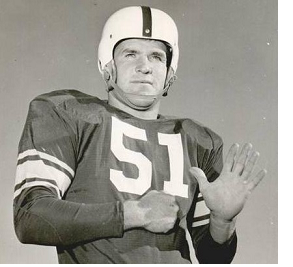 Oklahoma had
gone 11-0 in 1949, and I consider them to be an MNC for that season,
and they finished #1 in the AP poll in 1950, but then lost in the Sugar Bowl.
I covered their Hall of Fame coach, Bud Wilkinson, in the linked 1949
national championship article. This year's 10-0 effort was just part of
an NCAA record 47 game winning streak that would stretch to 1957, and
though Oklahoma was lost in the shadows of Ohio State and UCLA this
season, they would be the consensus MNC for each of the next 2 seasons.
Oklahoma had
gone 11-0 in 1949, and I consider them to be an MNC for that season,
and they finished #1 in the AP poll in 1950, but then lost in the Sugar Bowl.
I covered their Hall of Fame coach, Bud Wilkinson, in the linked 1949
national championship article. This year's 10-0 effort was just part of
an NCAA record 47 game winning streak that would stretch to 1957, and
though Oklahoma was lost in the shadows of Ohio State and UCLA this
season, they would be the consensus MNC for each of the next 2 seasons.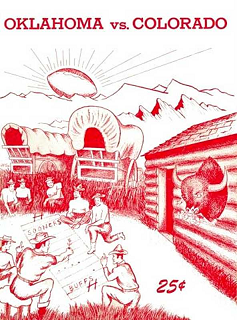
| Ohio State 10-0 | UCLA 9-0 | Oklahoma 10-0 | ||||||||||||||||||||||||||||||||||||||||||
|---|---|---|---|---|---|---|---|---|---|---|---|---|---|---|---|---|---|---|---|---|---|---|---|---|---|---|---|---|---|---|---|---|---|---|---|---|---|---|---|---|---|---|---|---|
|
|
|
||||||||||||||||||||||||||||||||||||||||||
| 1) DeVold
(math system) |
4.95 |
| 2) National Championship Foundation | 4.81 |
| 3) Billingsley (math) | 4.73 |
| 4)
College
Football Researchers Association |
4.65 |
| 5) Dunkel (math) | 4.54 |
| 6) Houlgate (math) | 4.53 |
| 7) Poling
(math) |
4.52 |
| 8) Boand (math) | 4.48 |
| 9) Sagarin-ELO (math) | 4.44 |
| 10) Litkenhous
(math) Sagarin (math) |
4.25 |
| 12) AP Poll | 4.17 |
| 13) Helms Foundation | 4.05 |
| 14) Berryman (math) | 3.51 |
| 15) Williamson (math) | 3.60 |
| 1) Boand (math system) | 4.26 |
| 2) College Football Researchers Association | 4.22 |
| 3) Poling (math) | 4.11 |
| 4) Helms | 4.09 |
| 5) Sagarin-ELO (math) | 4.06 |
| 6) National Championship Foundation | 3.96 |
| 7) Dickinson (math) | 3.49 |
| 8) Houlgate (math) | 3.35 |
| 9) Billingsley (math) | 3.34 |
| 10) Sagarin (math) | 3.28 |
| 11) Parke Davis | 2.77 |
| 1) Houlgate (math system) | 4.5 |
| 2) Helms | 4.3 |
| 3) Parke Davis | 4.2 |
| 4) National Championship Foundation | 3.7 |
| 5) Billingsley (math) | 3.6 |